Types of Hinges
There are more than 24 different types of hinges to allow for sweeping motion of one part in relation to another. Hinge design permits swinging of doors, panels, lids, suitcase halves, some briefcases, laptop computers and even some cell phones. Many hinges are made of various metals, fewer are made with engineered plastics and centuries ago people made hinges with wood and leather.
Many hinges allow motion through a limited arc but a few designs permit motion through nearly 360 degrees. Successfully selecting hinges requires some forethought. For instance, no one wants their car door to start to tilt because of metal fatigue. Should that occur, the door wouldn’t shut properly and thus safely. For this reason, it’s crucial to consider the total downward forces that will stress the pivot pin and its loop or barrel. Clearly, dense hardened metals will serve better than soft metals.
As with many technologies, not all hinges rely on a pivot pin and loop or barrel to provide swinging motion through an arc. The living hinge, often made of polypropylene or polyethylene, is one complete unit and the polymer’s natural flexibility allows for the two plates to swing in relation to each other. Similarly, leather hinges, often used hundreds of years ago, relied on this materials ability to bend without breaking.
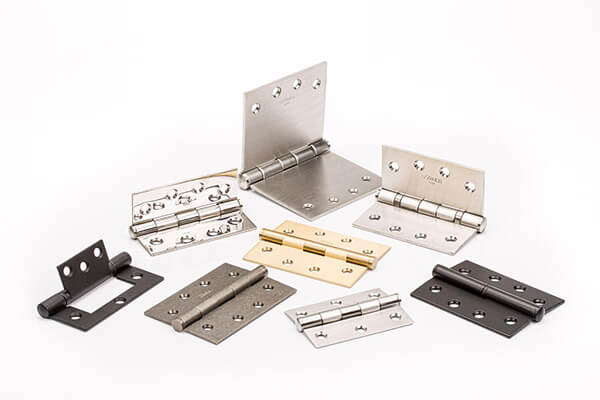
In addition to assuring there’s enough pivot pin and loop or barrel contact surface area to stand up to the load placed on the hinge, its crucial for the plates to be sufficiently secured by screws, bolts, nails or adhesive to the door and door frame, lid, clamshell halves or other structural members. Insufficiently secured plates pull out, leaving a non-functional hinge. Some of the many types of hinges:
|
|
|
|
|
|
|
|
|
|
|
|
|
|
|
|
|
|
|
|
|
|
|
|
|
|
Some of these also have alternate names. For instance, the butterfly hinge is known as a parliament hinge in Australia and the U.K. Similarly, the continuous hinge may be known as the piano hinge in some areas.
Common hinges
Once together the hinge makes it possible for there to be movement and rotation between the two objects. Hinges come in a variety of different shapes and sizes and most are reversible. What this means is that the hinges can be used regardless of which end is chosen to mount them in an upright position.
However there are hinges that are especially made for doors that are either right hand or left hand. In this particular instance when shopping for the appropriate set of hinges, you must make sure to buy the proper kind.
There are many varieties of hinges that are available for purchase for different places throughout the home. Each one has its one specific use. Four of the most commonly used are known as the “butt hinges.”
The butt hinges consist of four kinds;
- The common butt hinges
- The simple butt hinges
- The loose joint butt hinges and;
- The rising butt hinges.
The common butt hinges are most often used in putting up regular sized doors in houses. These hinges can be found in two varieties, the loose or rigid pin type. The pin can be taken out of the loose pin hinge but not from the rigid one.
The simple butt hinge consists of a pin that does not move. Both right and/or left-handed doors can be put on using this kind of hinge. Using this kind of hinge makes it possible to take a door off without having to take the time and energy to unscrew any of the hinges.
The third type of hinge is the loose joint butt hinge. This hinge is especially simple to use as it makes the process of removing a door relatively stress free. All that is required is to lift the door to a high enough level that it allows the hinge to steer clear of the pin on the opposite side. If a door may have to be taken off repeatedly, this is the kind of hinge that can do the job best.
The fourth and final type of butt hinge, referred to as the rising butt hinge, is a very unique kind of hinge. If the location the door is being placed in has any sort of flooring or thick, raised carpeting that could cause problems with the movement of the door, this hinge will correct the problem. The rising butt hinge is designed (as its name implies) to allow the door to rise as is necessary to not scrap or tear at the flooring when the door is opened.
There are many other kinds of hinges available for whatever your individual need is. Just to name a few, there are flush hinges, ball bearing hinges, spring-loaded hinges, pivot hinges and ornamental hinges.
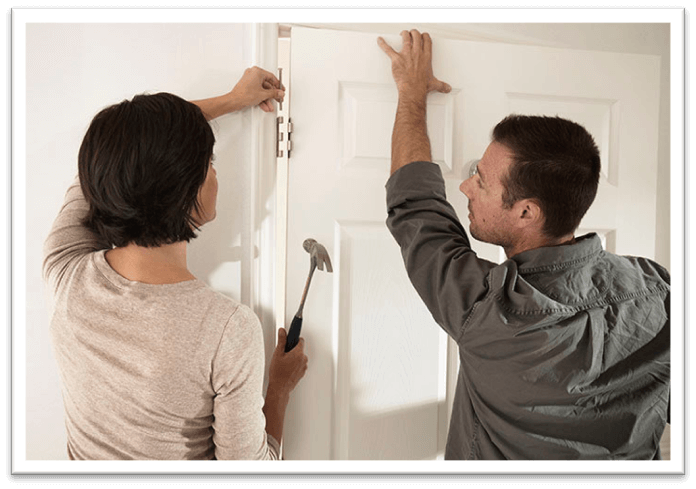
This type is the most simple and basic one available, they usually come in sizes ranging from 13mm to 150mm and are most likely to be seen on areas such as cabinet doors because they are strong and easy to attach although they cannot be adjusted. These components are suitable for just about any type of woodwork project because they are very easy to attach and have a simple yet strong design.
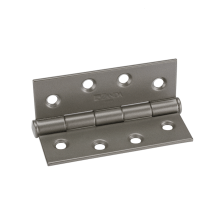
Butterfly hinge
Butterfly fittings are basically a butt hinge though they are designed to be fancy shapes rather than simple. They are also more of a decorative piece than general purpose one and aren’t as strong as butt hinges so they are used on smaller things that are made to be more aesthetically pleasing like jewellery boxes.
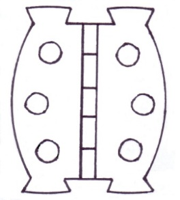
Flush hinge (fast fix hinge)
These are designed to do what their name suggests which is sit flush and they also do not require a recess to be cut. They are not as strong as some other fittings but are lightweight so the best application for these components are on areas such as small cupboard doors or small basic woodwork projects.
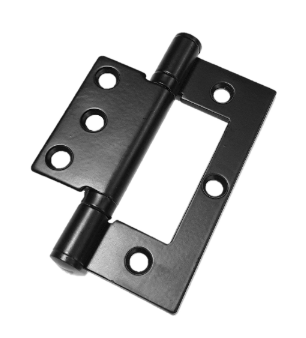
Tee hinge
These are shaped like a tee and can be found on areas such as metal or timber sheds. They are used because they give good strength and support to the door and are fairly easy to attach but give little security because the fixing screws are exposed.
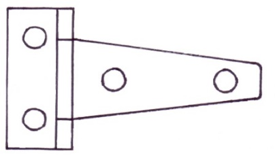
Barrel hinge
This type of fitting consists of two parts and the first has a threaded section which screws into the second section that contains a pre drilled hole. This screw and thread feature assembly makes the component very easy to fit and dismantle. They also allow for a larger swinging action so are more suitable for areas such as two way swinging doors.
Piano
These hinges come in a range of lengths but are the largest type of its kind which is because they are used along large areas such as lids or desk tops. Components like these give good support along the whole edge and are very strong so are suitable for heavy objects.
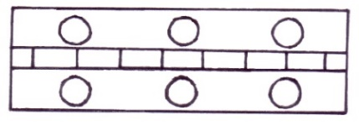
These fittings are the most complicated and work well with manufactured boards. They are designed to be fitted on the inside so that they cannot be seen. This means that their best application is on areas such as cupboard doors which is where you will mostly see them. They can also be adjusted which makes them excellent for cupboards or other furniture.
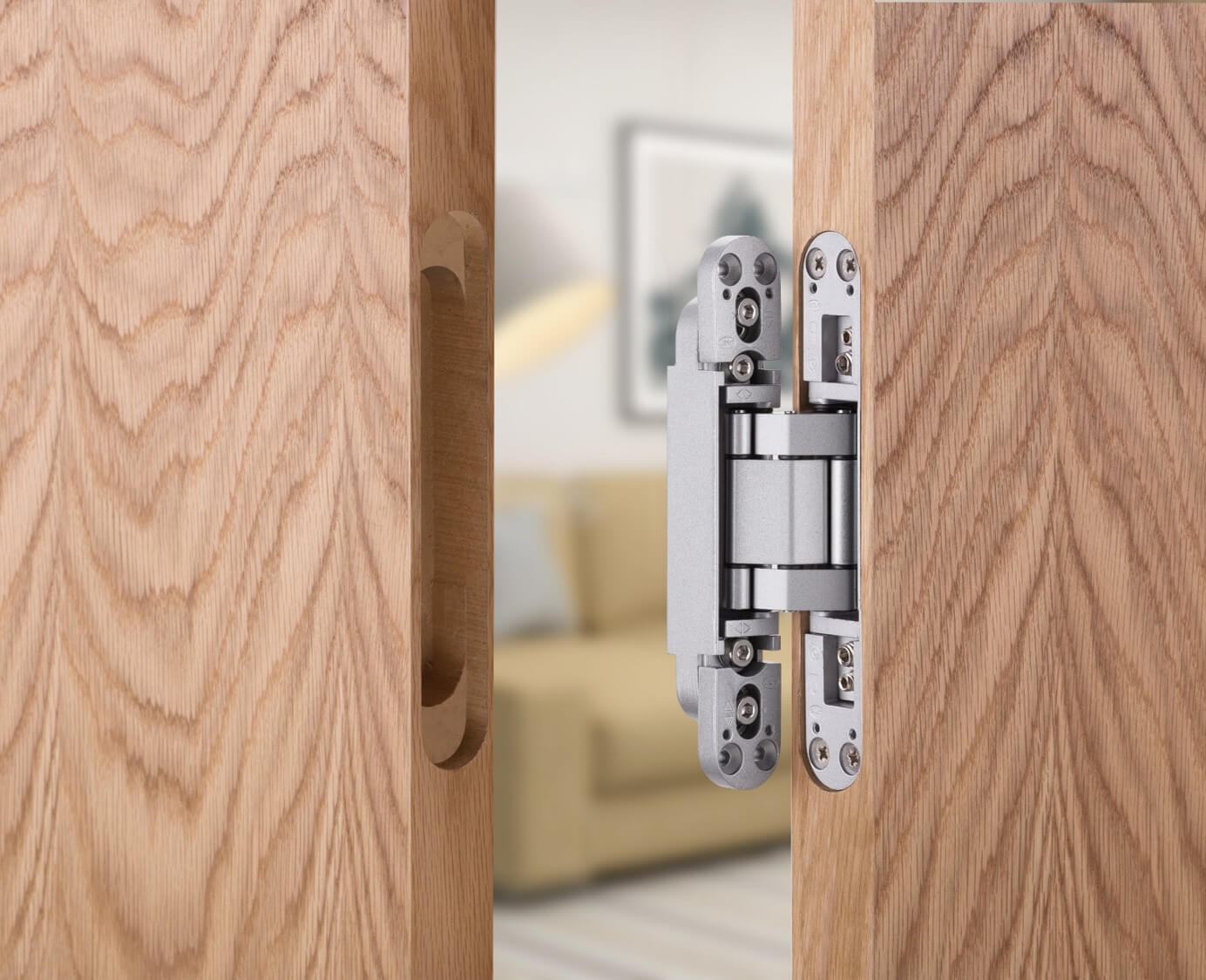
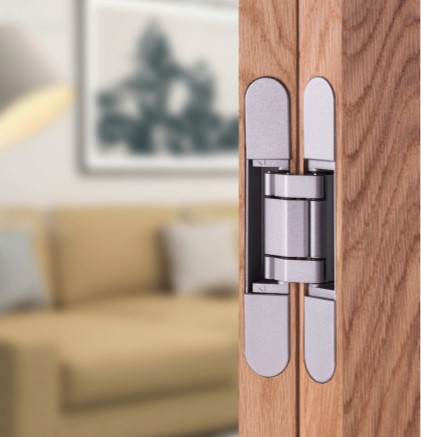
Architectural stainless steel wide throw butt hinge
A wide throw hinge sets the pivot point out away from the door allowing the door to open 180 degrees (depending on obstructions in the swing path of the door). Wide throw hinges can be used when a door is set in a wide door jamb. Stainless steel base material. Good for use outdoors, on sea coasts or anywhere the look of satin stainless steel is desired. Designed for full mortise installation.
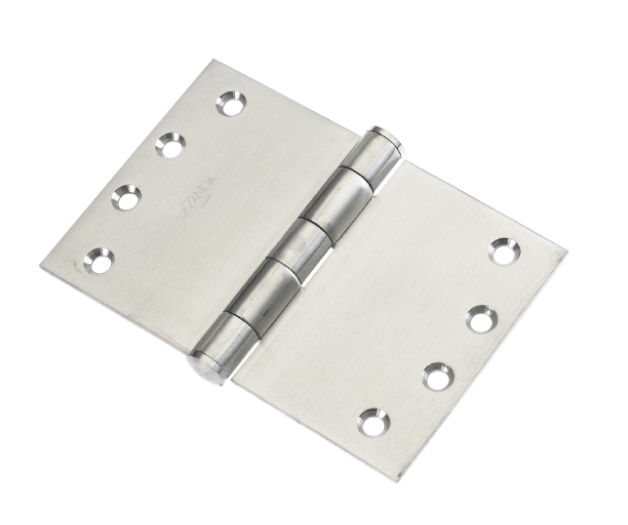
A rising butt hinge solves the problem where you have a door that will not open completely because of a raised or unlevel floor or high carpeting.
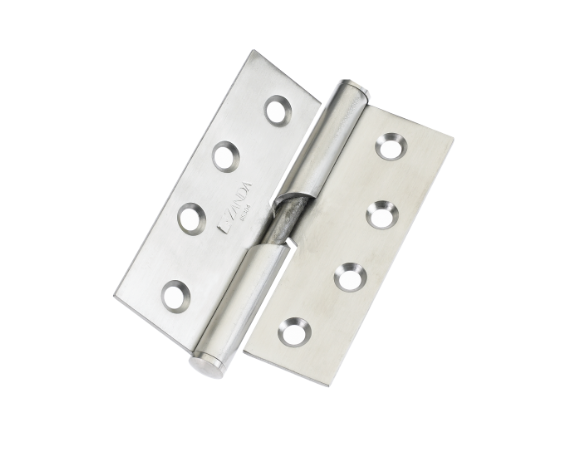
Lift off Hinge
Loose joint hinge, opened door may be lifted off after installation. Comes in either a right hand or left hand model. Steel base material, comes complete with matching wood screws.
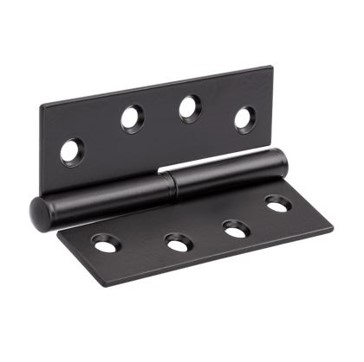
Table of hinge types and where to use each
| Hinge Type | Where to Use | Features |
| Ball bearing |
|
|
| Continuous / piano |
|
|
| Double-action spring |
|
|
| Flush |
|
|
| Knuckle |
|
|
| Lift-joint butt |
|
|
| Ornamental |
|
|
| Residential / butt |
|
|
| Rising butt |
|
|
| Spring |
|
|
| Strap and T |
|
|
| Surface |
|
|
| Swing-n-sway |
|
|
